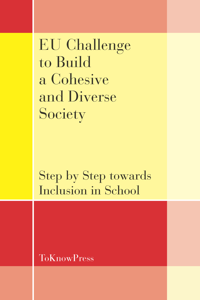 Step by Step towards Inclusion in School
Step by Step towards Inclusion in School
A Case of Roma and Migrant Population
Valerij Dermol, Alexander Krauss, Alenka Dermol Bernik,
Jožek Horvat Muc, Teresa Juan García, Susana de Juana-Espinosa, Besa Kadriu, Andrej Koren, Veli Kreci, Stanka Lunder Verlič, Anica Novak Trunk, Selma Osmanović, Virginia Payá Pérez, Ana Rosser Liminana, Augusto Sebastio, Aleš Trunk, Merita Zulfiu Alili, Nada Trunk Širca
PDF | 2020 | ISBN 978-83-65020-32-1
Printed | 2019 | ISBN 978-83-65020-27-7
© 2020 Authors
https://toknowpress.net/ISBN/978-83-65020-32-1.pdf
Socio-political and demographic changes in Europe have, among other things, imposed a new way of functioning of the social organization system, which is reflected in many ways. Not even the education system survived this tempo of change. Reorganizing the European system in social, economic and political terms has, on a broader scale, also had a significant impact on European policymaking.
All those major changes, namely demographic changes and migration have created favorable circumstances for preparation of a unified educational system, suitable for all cultures currently building the social fabric of Europe. The concept of a heterogeneously structured society significantly influenced designing of new strategies in the European education system.
In the European space, a developing trend of migrant and the Roma community integration into the education system has been addressed a lot recently, primarily to enable finding the most appropriate modules for individual countries in order for them to apply the most appropriate modes of this education policy. This trend of multinational functioning of an education system, embedded within a common European space, made it possible to distinguish different country approaches which more or less deal with the integration aspect of migrants and Roma.
